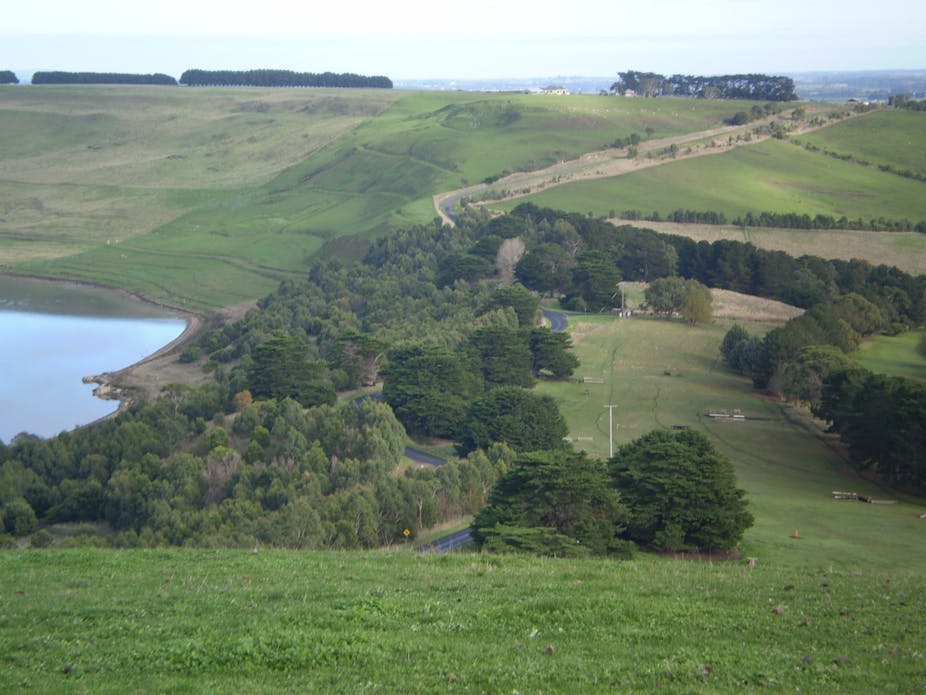The Final Report of the 2011 Garnaut Climate Change Review made a strong case for including land based reductions in greenhouse gas emissions and biosequestration activities in a carbon pricing scheme.
Garnaut considers that payments for these activities could transform rural land use and greatly expand the economic prospects of rural Australia. To realise this potential, the government would need to directly link its proposed Carbon Farming Initiative (CFI) and carbon pricing.
Save carbon in soils and trees, sell credits
Garnaut provides a framework to support carbon management across landscapes, as opposed to pursuing a more punitive approach to land sector emissions. Farmers and other land managers would sell credits as offsetts from these activities to companies who have to reduce emissions under the scheme.
These activities would generate two types of Australian Carbon Credit Units. Kyoto carbon credits would apply to activities that Australia currently includes under the international accounting and reporting for its Kyoto targets, savannah burning, agricultural methane and nitrous oxide emissions.
“Non-Kyoto” carbon credits would apply to activities such as increased sequestration in soils through cropland or grazing land management and forest management.
As the first commitment period of the Kyoto agreement ends in December 2012, the above classifications may well change in any new international agreements.
The Australian government needs to give strong assurances to land managers that currently covered activities will be part of any new international agreement.
Keeping a cap on credits
Garnaut proposed that the contribution of land-based credits would be capped, at least in the initial stages of the scheme. Perhaps this was because he considered these activities to have a very large “technical” potential. There are also concerns in some quarters that credits would severely reduce the need to reduce fossil fuel emissions.
A cap of 4% in 2012, rising to 10% in 2020, would apply to Kyoto credits. A cap of 2% in 2012, rising to 4% in 2020, would apply to non-Kyoto credits.
Garnaut estimated that total revenue generated by the sale of these credits could rise to $2.25 billion by 2020, or roughly the value of recent national wool production.
By 2020 up to 14% of total emission reductions could be met using land based credits. These limits would be removed when land sector emissions such as methane from grazing animals and nitrous oxide from fertilisers were fully covered by the carbon trading scheme.
Complementary incentives would be put in place to encourage design of biodiversity or other environmental benefits into these activities.
We agree with Garnaut: we are a long way from knowing how much of the technical potential for land-based emission reduction or biosequestration might be realised economically.
Getting into the details
Demonstrating activities are “additional” (or not part of the normal course of business) is particularly problematic.
In the Bill currently before parliament the test for additionality is two-fold. First a project cannot be already required by law. Second, the carbon abatement activities proposed within the project cannot be “common practice”.
Both the interpretation of these tests and establishing acceptable proof will be a considerable challenge.
So what is the baseline against which we would assess credits? It could be based on recent historical emissions or a forward-looking, “business as usual” approach.
The CFI consultation paper places the resolution and approval of these issues with the Scheme administrator, on advice from an expert Domestic Offsets Integrity Committee.
Finding a place for saving forests
Garnaut looks at recent Tasmanian discussions about changing native forest management. He believes the carbon sequestration benefits of these changes are considerable.
This seems to ignore the many caveats on the CSIRO estimates of the potential sequestration from this activity, the benefits of carbon storage in wood products (which he promoted in the 2008 Review) and potential future carbon losses in native forest due to wildfire.
Due to uncertainties in potential carbon benefits, and future risks if management intensity decreases, we agree with him that carbon pricing revenue should not be used in any deal reached to reduce native forest harvesting in Tasmania.
Garnaut’s 2008 Review pushed for incorporation of international credits from reduced emissions from deforestation and degradation in developing tropical countries (REDD+), but there is little mention of it this time. This might be because the international arrangements for this program are still in development.
A bright future?
Garnaut and his team are to be commended for their comprehensive analysis of the role of the land sector in arrangements for reducing carbon emissions.
Australia will need strong research if it’s to implement land based climate mitigation activities. We strongly support Garnaut’s view that investment in research, development, demonstration and commercialisation of new technologies in the land sector should be a major focus of expenditure from carbon taxation revenue.
There is a high degree of uncertainty about whether farmers will be willing to commit land to these activities, even if economic analysis suggests it might be the most profitable thing to do. Many farmers remain sceptical about the need for action on climate and are uncertain about the strength and durability of the market. Direct linkage of the Carbon Farming Initiative to the proposed carbon tax would remove some of this uncertainty.
They are also unsure what may happen to the price in future, the implications of a 100-year commitment and the impact of risk management arrangements. The availability of land, labour and capital and the supply of seedlings or other inputs will also limit the potential to rapidly scale up investment in biosequestration.
The challenge for government will be getting the linkages and implementation settings right so that an active, accessible and robust market can develop. This, is turn, will provide resources for much needed research and new approaches to land management. This chance to integrate carbon farming with the production of food and fibre and other environmental services must not be squandered.

